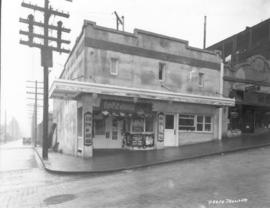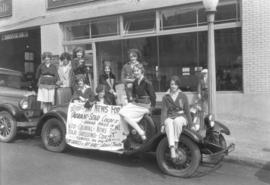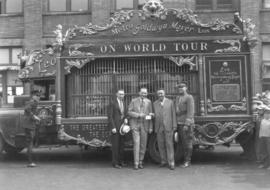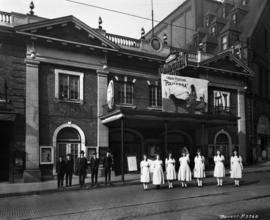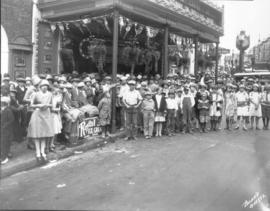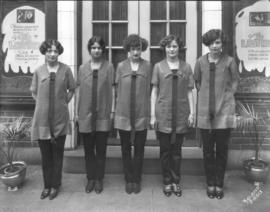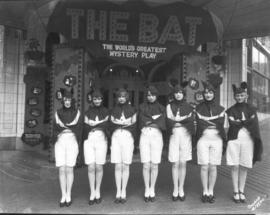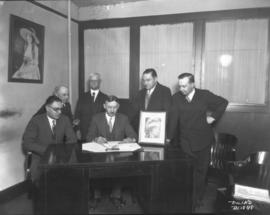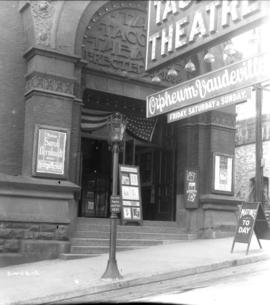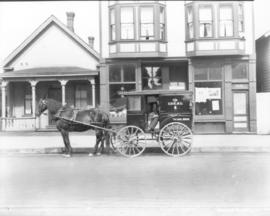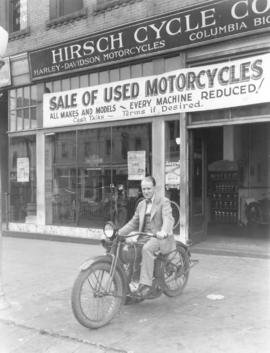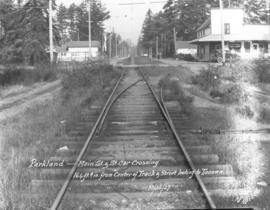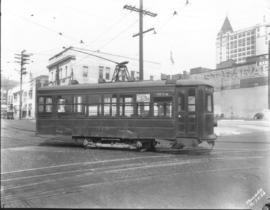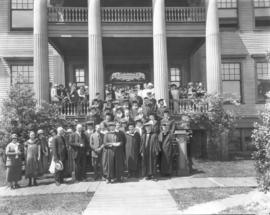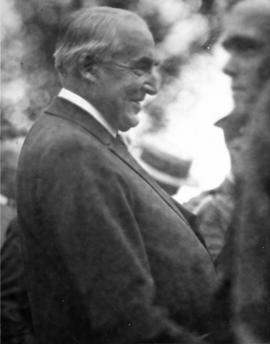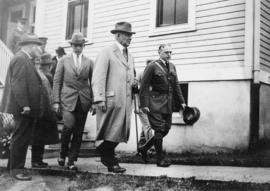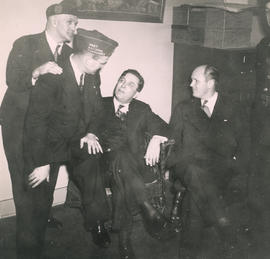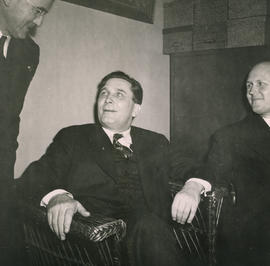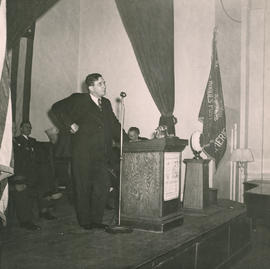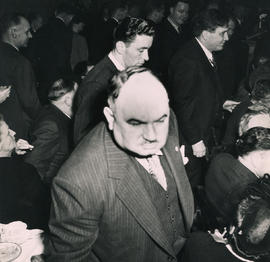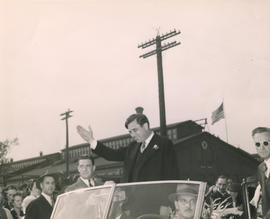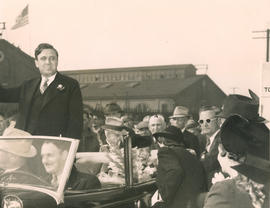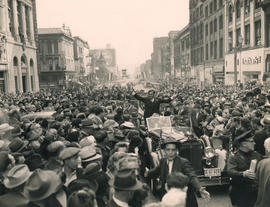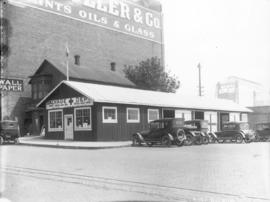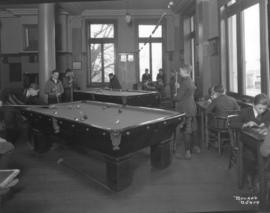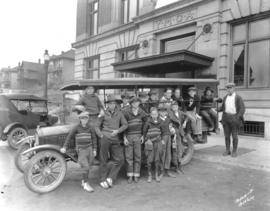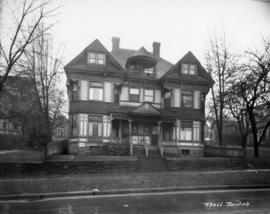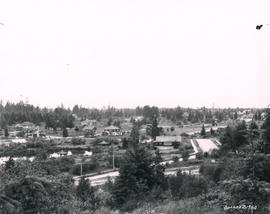- Item
- 1920-12-28
Part of Marvin Boland Photographs
J.R. McKinnell opened the new Rose Theater at 514-16 South 11th Street in late December of 1920. The original Rose Theater was located at 905 South Tacoma Avenue (now Tacoma Avenue South) in the Lucerne Building. On the 28th of December the feature at the new Rose was "Ruth of the Rockies" starring Ruth Roland, one of the Queens of the early silent serials; she specialized in westerns and comedies. "Ruth of the Rockies" was one of her later films. The new movie house had been built by Tacoma contractors Wick and Johnson at an estimated price tag of $8,000 for a California client. It was constructed of reinforced concrete and was 22 feet high with a 35 x 65 foot footprint. The building was demolished July of 1996. (TDL 1/2/1921, pg. B6- photo, 12/12/20, pg. B-5 article) Boland B3470, BU-13,339, TPL-2394
Rose Theater (Tacoma); Motion picture theaters--Tacoma--1920-1930;
